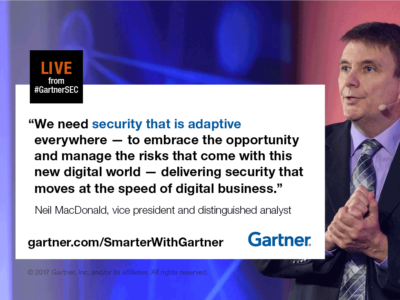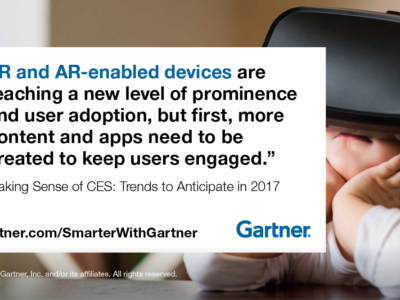A Q&A with Gartner’s Mike Ramsey explores the road to driverless mobility.
There is tremendous buzz surrounding autonomous and connected vehicles, and the ecosystem of technology that is feeding them. Gartner forecasts 21 million new automobiles will be equipped with data connectivity, either through a built-in communications module or tethered to a mobile device in 2017.
With the Consumer Electronics Show (CES) 2017 taking place in January, Mike Ramsey, research director at Gartner, shared his insights on the realities, possibilities and some challenges on the road to connected, autonomous vehicles.
Q: What are the biggest hurdles to autonomous vehicles becoming mainstream?
The biggest hurdle will likely be regulatory. Governments will need to feel comfortable with the rules put in place before these cars are released to the general public.
By 2020, 50% of motor vehicle manufacturers will apply advanced analytics to connected-vehicle data to identify and correct product defects.
The current state of autonomous vehicle development is still a bit fragmented as automobile manufacturers, large technology providers, chip companies and lesser-known tech innovators are all vying for a seat at the table. The critical capabilities for automated driving cluster around sensing technologies, 3D mapping and data analytics, and algorithms for computer vision, localization and path planning. Until clear leaders and standards begin to emerge in each of these areas, we will continue to see different alliances forming around the autonomous vehicle initiatives of leading car companies.
Q: What types of user trends are surfacing from connected car data?
The development of data analytics algorithms is progressing rapidly in the IT industry, and these technologies are being adopted in the automotive industry to extract value from the streams of data generated by the connected-vehicle fleet.
We are only beginning to scratch the surface of understanding and putting to work all of the data that cars are producing. We expect that by 2020, 50% of motor vehicle manufacturers will apply advanced analytics to connected-vehicle data to identify and correct product defects.
This trend presents an unprecedented opportunity for the automotive industry to accelerate the process of locating product defects and identifying root causes. Using data, problems in a whole fleet can be looked at, and the data can help guide engineering decisions and repairs. Additionally, problems that might not have been previously noticed can be identified.
The impact on the automotive companies that implement these innovations will be reduced costs from recalls, service bulletins and settlements, along with improved customer satisfaction.
Q: What kind of biometric technology can we expect to see in cars? What is the benefit?
Biometrics get really interesting when we start thinking about the life saving potential of these technologies. Imagine a scenario where a car senses that a driver is having a heart attack and takes over the vehicle from the driver.
Ford has patents on systems that can tell when a driver is in an agitated state and will hold incoming phone calls. Preventing people from getting into dangerous situations is opening up many interesting technology avenues. We are also seeing driver monitoring systems – enabled by a camera watching the driver – which are designed to make sure he is not falling asleep or distracted while behind the wheel.
As cars are becoming more automated, they are being equipped with an increasing array of sensing technologies, including cameras, radar and lidar systems. Many automobiles will use image detection as the primary means to identify and classify objects in the vicinity of the vehicle so they can provide more sophisticated responses and even have autonomous control. The captured images can be correlated with time, geolocation and other sensor information for contextual analysis to improve predictive accuracy and enrich the user experience.
Get Smarter
Client Research
Gartner clients can learn more in “Predicts 2017: Digital Business Will Pervasively Transform Product Design and PLM Across Manufacturing” and “Forecast: Connected Car Production, Worldwide.”










